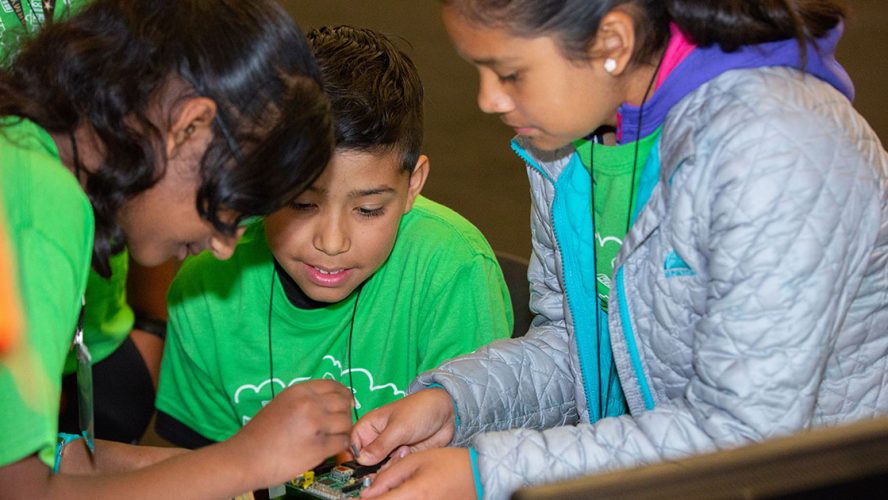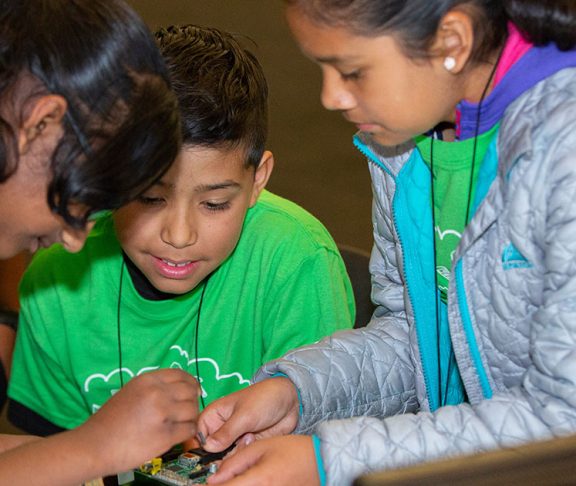Let’s get real, the Race for Mars is on! NASA engineer Dr. Farah Alibay at the Pasadena Jet Propulsion Laboratory says young women everywhere can prepare for blastoff — so add coding to your favorite activity!
The Human Missions to Mars explains that the scientific and engineering challenges of space travel to-and-from the red planet require many professionals trained in a number of STEM skills — most of which include coding; developing trajectory systems to travel +/-140 million miles; building equipment to land in different atmospheres; preparing humans for life in space for up to three years by replicating earth’s ecosystem; and designing space suits that shield astronauts from the effects of deep space radiation.
Mapping your trajectory
To be a part of both on-the-ground and space flight teams that complete this historic challenge, you can translate your personal interest into a STEM career needed for a successful mission.
Here are three easy steps if you want to become a Mars astronaut:
- 1. Pick your favorite thing to do and find the science in it. (Check out how NASA tapped Holly Jackson’s passion for sewing!)
- 2. Stay with math. (Girls are really good at math says New York Times!)
- 3. Learn to Code! (Coding is useful in any STEM career — just download Raspberry Pi!)
There are lots of ways to learn to code outside of school. Join groups like Coder DoJo, Code Club and Code.org or participate in community events like Coolest Projects North America — a free kid-led showcase at the Discovery Cube of Orange County on September 23, 2018. The Raspberry Pi Foundation is hosting its inaugural Coolest Projects in Orange County, California, a leading coding hot spot that leads the way for over 65 STEM Ecosystems throughout the United States. Orange County is the incubator of the national STEM Initiative supported by the Samueli and Broadcom Foundations, which provide students with multiple pathways to STEM careers.
At Coolest Projects, students will showcase digital projects to the public, as they do at Intel ISEF and the Broadcom MASTERS where coding has become a major skillset for science fair competition. Coolest Projects builds upon earlier hands-on family coding events in Orange County like the 2017 Raspberry Jam where visitors learned to code using bananas as drums at the Girl Scouts OC booth.
Translating your interests
Whatever you like to do, you can use coding to make it cool!
Take Sara who loves cities like Paris and London. She used a Raspberry Pi, LEGOs and LEDs to build famous monuments and created a mobile app to teach people all about these cities. She showcased her project at Coolest Projects Dublin and taught coding to kids during EU Code Week. Sara offers this advice: “Base your project on something you enjoy, do your best and, most importantly, have fun!”
Coding is becoming the global language! The Hispanic Heritage Foundation promotes the National Computer as a Second Language Initiative and there are coding programs in colleges and universities. Henry Samueli School of Engineering and Donald Bren School of Information and Computer Sciences at the University of California, Irvine hold summer and weekend workshops like FABcamp to empower 6th through 8th graders to become makers and designers through coding, applying computer aided design software, 3D printers, laser cutters and industrial sewing machines.
“Coding will lead you to an exciting career — in space or here on earth,” said Paula Golden, president of the Broadcom Foundation. “Coding is one of the most in-demand skills today; 7 million job openings that require coding know-how. There are so many fun exciting ways to develop a skill that just might propel you to Mars one day!”


